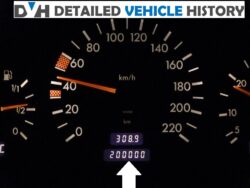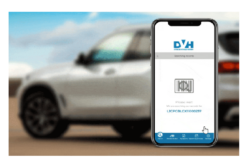A reconstructed car title is often encountered in the automotive world, especially when buying or selling used vehicles. Simply put, it’s a designation given to a car previously deemed a total loss but has since been repaired and certified as roadworthy. This classification can significantly affect the car’s value, insurance options, and resale potential.
If you want to learn more about a vehicle’s history and ensure you’re making an informed decision, consider using the VIN Decoder from Detailed Vehicle History for comprehensive insights.
What is a “Reconstructed” Car Title?
A reconstructed title is issued when a car sustains severe damage, such as caused by a flood damage, an accident, or other severe incident, and is repaired to meet safety and operational standards. However, the title differs from the “clean” title since it indicates that the vehicle has never been involved in an accident, has no major damage, or has title issues.
Typically, vehicles with a reconstructed title were once given a salvage title, meaning they were declared unfit for the road. After extensive repair and passing the required inspection, the title status is updated to “reconstructed.” making the car legally operated on the road.
It is important to note that the title doesn’t erase the vehicle’s damaged history.
Related: Learn about the differences between a salvage title and a rebuilt title.
How is a Reconstructed Title Different from a Regular Title?
The main differences between a reconstructed title and a regular title revolve around the vehicle’s history and market perception:
- Resale Value
Cars with a reconstructed title typically have a lower resale value due to their prior damage history.
- Insurance
Insuring a reconstructed title vehicle can be more complicated, with fewer coverage options or higher premiums.
- Inspections
Reconstructed vehicles must undergo inspections to ensure they are roadworthy, a requirement not needed for cars with a regular title.
Check out this guide on all types of car titles to check your car title.
Obtaining a Reconstructed Title
To obtain a reconstructed title for a vehicle, you’ll need to follow a series of steps:
- Repair the Vehicle
The car must be restored safely and operational using approved methods and parts.
- Document Repairs
Keep detailed records of all repairs, including receipts for parts and labor.
- Schedule an Inspection
Contact your local Department of Motor Vehicles (DMV) or equivalent authority to schedule an inspection. They’ll verify that the car meets safety standards.
- Submit Required Paperwork
Submit repair documentation, inspection results, and an application for a reconstructed title.
For additional insights, explore how to perform a thorough title check to verify a vehicle’s status before buying or selling.
Pros and Cons of Buying a Car with a Reconstructed Title
Pros:
- Lower Cost
Reconstructed title vehicles are generally more affordable and appealing to budget-conscious buyers.
- Functional Vehicles
Many cars are fully repaired and can serve as reliable daily drivers.
Cons:
- Insurance Challenges
Coverage options might be limited, and premiums can be higher due to the car’s history.
- Depreciation
These vehicles often experience steeper depreciation, making them less attractive for resale.
- Hidden Issues
Despite passing inspections, underlying problems might arise later.
For more guidance, learn how to sell a car without a title.
Legal Considerations
Owning a car with a reconstructed title comes with legal responsibilities. Regulations vary by state, so it’s crucial to understand the specific requirements in your area. Additionally, when selling a reconstructed vehicle, full disclosure of its title status is often required by law.
Verifying the vehicle’s history can help avoid legal pitfalls. Learn more about clean titles and why transparency is essential.
Buying a Reconstructed Title Car: What to Keep in Mind
If you’re considering purchasing a reconstructed title car, keep these tips in mind:
- Research the Vehicle’s History
Use services like Detailed Vehicle History to uncover past accidents, repairs, and ownership details.
- Get an Independent Inspection
Hire a trusted mechanic to assess the car’s condition.
- Understand the Title
Familiarise yourself with the title’s background and ensure all paperwork is in order.
- Negotiate Wisely
Use the car’s title status as leverage to negotiate a fair price.
For further insights, explore the implications of owning vehicles with branded titles.
While buying or owning a reconstructed title vehicle has challenges, it can also be a practical choice for the right buyer. You can make an informed decision by thoroughly researching the car’s history, understanding legal requirements, and weighing the pros and cons.
Looking to delve deeper into vehicle titles? Read about exempt mileage on titles or how to get a salvage title check report.










